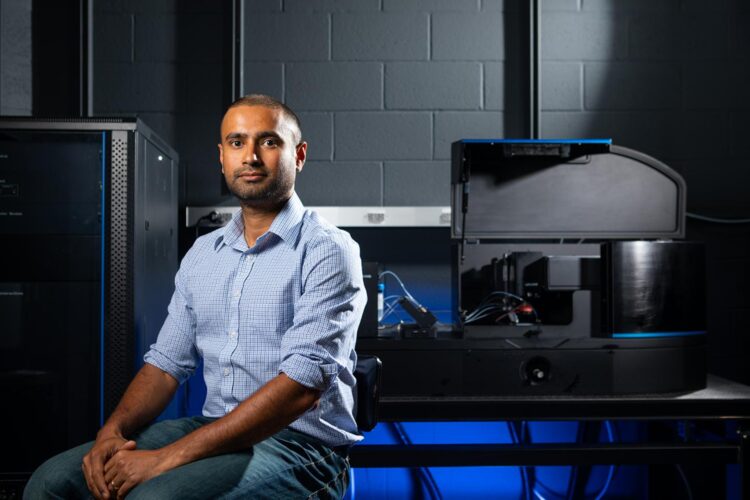The research — supported by $2 million in NIH funding — will investigate biophysical processes that impact the function of human cells and disease

Credit: Douglas Levere / University at Buffalo
BUFFALO, N.Y. — Inside human cells, proteins and RNA can cluster together to form spherical droplets that play vital roles in cellular processes as well as in certain human diseases.
How do these droplets, also known as protein-RNA condensates, come together? What molecular forces govern their composition, and what drives them to take on a liquid state, or a harder, more gelatinous form?
University at Buffalo biophysicist Priya Banerjee will explore these questions through a Maximizing Investigators’ Research Award (MIRA) for outstanding investigators from the National Institute of General Medical Sciences, part of the National Institutes of Health. The $2 million grant will provide support to Banerjee’s research group for the next five years.
The research could improve understanding of cellular processes that impact human health, says Banerjee, PhD, an assistant professor of physics in the UB College of Arts and Sciences.
He explains that protein-RNA condensates are involved in a variety of biological functions. In cells, they can take the form of membrane-less organelles (MLOs) that can help to organize the internal contents of cells, and can serve as hubs of biochemical activity, recruiting molecules needed to carry out essential cellular functions including gene regulation, he says.
Additionally, MLOs can be involved in human disease. For example, liquid droplets holding a protein called “fused in sarcoma” are found in healthy brain cells. But in some patients with the neurodegenerative disease amyotrophic lateral sclerosis (ALS), the protein forms aggregates of solid material, Banerjee says.
His team is developing a toolbox — combining correlative multicolor single-molecule fluorescence microscopy, dual-trap optical tweezers, and microfluidics — to study the behavior of protein-RNA condensates. Then, the scientists will use these technologies to probe the properties of the condensates and the forces driving their formation.
Simultaneously, the team will evaluate how these condensates may change under conditions associated with disease, such as the presence of a genetic mutation that creates an altered protein sequence. If successful, Banerjee’s research group would ultimately apply its novel approach to pharmacologically target abnormal protein-RNA droplets that are associated with human diseases.
“MLOs play key roles in intracellular storage and signaling processes, and are associated with many human diseases,” Banerjee says. “Currently, there is a clear gap in our understanding of the molecular driving forces that are responsible for physiologic regulation of their composition, and the forces that facilitate their pathologic transformations. This is partly due to the lack of suitable tools that can simultaneously probe structure, dynamics and rheological properties of the biomolecular? condensates across different length- and time-scales.”
“The NIH award will enable us to address some critical gaps in knowledge over the next five years.”
###
Media Contact
Charlotte Hsu
[email protected]
Original Source
http://www.





